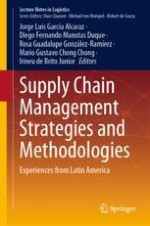This book showcases the successful practices of manufacturing companies in Latin America, highlighting the strategies and technologies they have implemented to produce high-quality products and remain competitive in the market. Divided into three parts, the book covers various aspects of the manufacturing process. Part I presents methodologies and strategies for demand forecasting and raw material procurement, providing insights into how companies are meeting their production needs and managing costs. Part II focuses on methodologies and strategies applied in the production process, exploring the various techniques and practices that companies are utilizing to optimize their manufacturing operations. Finally, Part III lists methodologies and strategies applied to product distribution, demonstrating how companies are delivering their products to market efficiently and effectively. Overall, this book provides a comprehensive overview of the best practices being employed by successful manufacturing companies in Latin America, offering valuable insights for businesses looking to improve their manufacturing processes and remain competitive in today's market.
